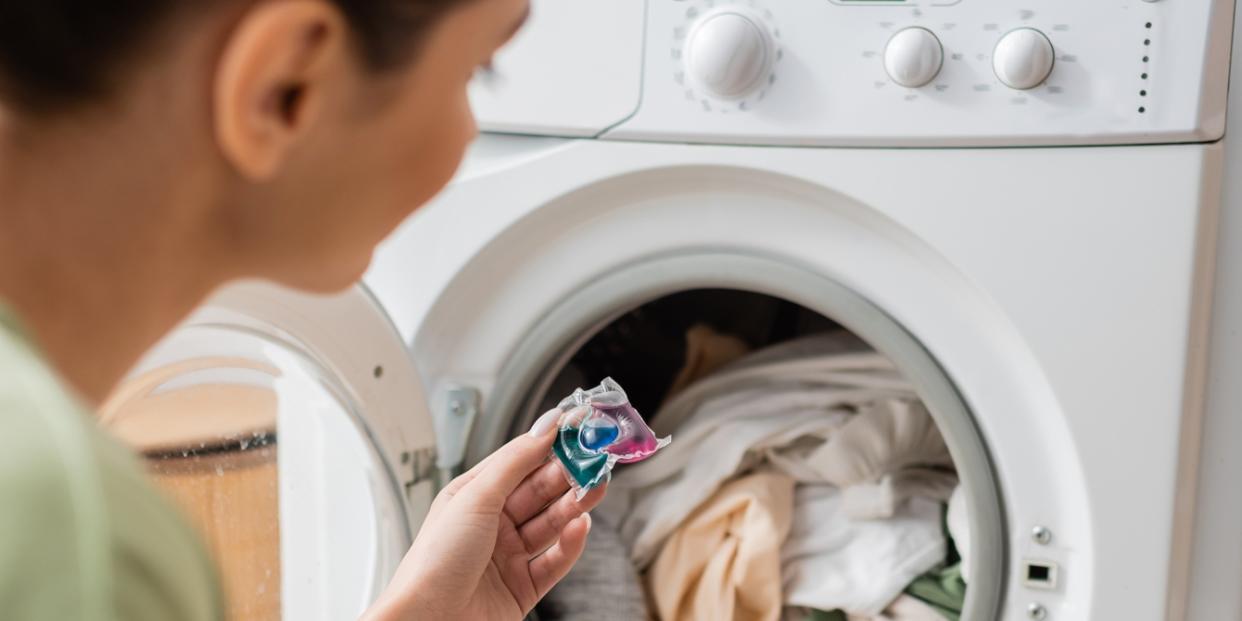Poison control center data shows the number of kids and adults exposed to laundry pods is still high

If you’ve got laundry pods at home, consider this a PSA to keep them safely out of reach of kids or older adults. It seems like many parents and caregivers have gotten the message about keeping laundry detergent pods stored safely away from little hands, but a new study says children of all ages are still being poisoned by laundry detergent pods—and so are older adults.
Even though the number of laundry pod exposures in children under 6 has decreased overall, children are still getting to them (including teens) as well as seniors, according to a team from Nationwide Children’s Hospital and the Central Ohio Poison Center, as the exposure burden has increased, the researchers report.
The study was published in Clinical Toxicology. Researchers looked at poison control center call data from 2014 to 2022. In the most recent three years of the study, poison control centers in the U.S. received 36,279 calls about laundry detergent packet exposures, which equates to an average of one call every 44 minutes.
Of the calls, 87% were about kids under the age of 6. About 6% of single-substance exposures to laundry pods resulted in serious medical situations. There were nine deaths during that period related to laundry pod exposures, but all of them were in adults (most over the age of 70).
The annual exposure rate in kids under the age of 6 went up from 392.6 per 1 million people in 2018 to 458.7 per 1 million in 2020, the data showed.
Although children younger than 6 were involved in most of the pod exposures, their annual rate of exposure actually declined by 6.8% over the last 2 years of the study, to 427.4 exposures per 1 million children, after increasing by more than 155% from 2017 to 2018.
Adolescent exposures went from 4.1 exposures per 1 million in 2014 to 7.6 exposures per 1 million in 2017. In adults, there were 1.7 exposures per 1 million people in 2014, which went up to 4.2 exposures per 1 million in 2022.
Protecting kids from laundry pods
The international standards organization ASTM set a new rule for laundry pod packaging in 2015, but a 2022 update didn’t do much to make it stronger, the authors said. The authors said that there are opportunities to strengthen the guidance including requiring Poison Prevention Packaging Act-compliant packaging or passing other measures such as individually packaging each packet.
“The voluntary standard, public awareness campaigns, and product and packaging changes to-date have improved the safety of these products, but a high number of children are still exposed each year,” Christopher Gaw, MD, senior author of the study, emergency medicine physician and faculty of the Center for Injury Research and Policy at Nationwide Children’s, said in a statement. “There is still room for improvement.”
Why is the decline not more pronounced? The voluntary safety standard lets manufacturers adhere to child-resistant container requirements in six different ways but doesn’t mandate that they follow the Poison Prevention Packaging Act (PPPA) of 1970, which has been shown to be highly effective in preventing child access to poisons.
If you’re concerned about safety, it might be wise to switch back to liquid laundry detergent. Parents and caregivers of children under 6 as well as adults with a history of dementia, Alzheimer’s disease or developmental disability should instead use traditional liquid laundry detergent and not pods, the authors warned.
“Many families don’t realize how toxic these highly concentrated laundry detergent packets can be,” Dr. Gaw said. “If you have young children or vulnerable adults in your home, using traditional laundry detergents is a safer alternative.”
How to safely store laundry pods
To safely store laundry detergent pods and prevent poisoning exposures in households with older adults and/or young children, it’s important to take extra precautions.
Keep pods out of reach and sight: Store laundry pods in a high, locked cabinet that is inaccessible to both older adults (especially those with cognitive impairments) and young children. Consider child-proof locks for added safety.
Original packaging: Always keep detergent pods in their original packaging. These packages are often designed to be child-resistant and can also help adults recognize that they contain chemicals and not food or candy.
Clear and bold labeling: Ensure the packaging is clearly and boldly labeled as a hazardous product. If the original label is unclear or worn off, apply a new, prominent label.
Avoid containers that resemble food storage: Do not transfer detergent pods into food storage containers like Tupperware or anything that could be mistaken for something edible.
Educate everyone: Educate all family members, including older children, about the dangers of the pods. Clearly communicate that they are not toys, candy, or food.
Consider alternatives: If there is a significant risk of confusion or ingestion, consider using alternative forms of laundry detergent that are less appealing and less hazardous, like liquid or powder detergents.
Of course, keep emergency numbers, such as Poison Control, in an easily accessible location in case of accidental exposure.


